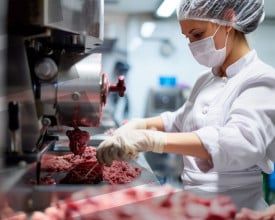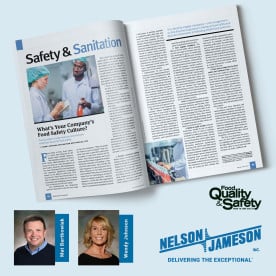Monthly Archives: June 2020
- June 23, 2020
A critical component in food safety is the detection of contaminants. One of the worst nightmares of anyone working in food processing, is finding something in the final product that is not supposed to be there. This can cause costly product loss, clean-up and maintenance costs, and the potential for recalls and/or litigation. Even though everyone tries to prevent foreign object contamination, pieces of tools such as scrapers can break off, or items such as pens can fall into the product. To make sure that these items are caught, and that contaminated product does not make it out the door, many plants utilize metal detection devices and products.
Metal detectable products are constructed of a few different materials. They are often blue for easy visual detection. Blue is also the most common non-food color.
- June 04, 2020
Food safety truly is a collective effort. From the farm to the table, ensuring food safety is a way we can reaffirm our investment in, and care
- June 03, 2020
The COVID-19 pandemic disrupted normal operations for countless food and beverage manufacturers. Disruptions from future pandemics may occur due to limited staff because of layoffs, social distancing requirements, or sickness; additional sanitation requirements to control viral transmission; changes in production levels; and possibly plant shutdown. These situations can lead to the need of resources for food safety sanitation.
It is essential that food manufacturers create safe, quality food, therefore, routine practices need to continue and additional sanitation may need to be added. Employers also need to ensure a safe environment for their staff, including minimizing the risk of being exposed to harmful viruses and infections.





